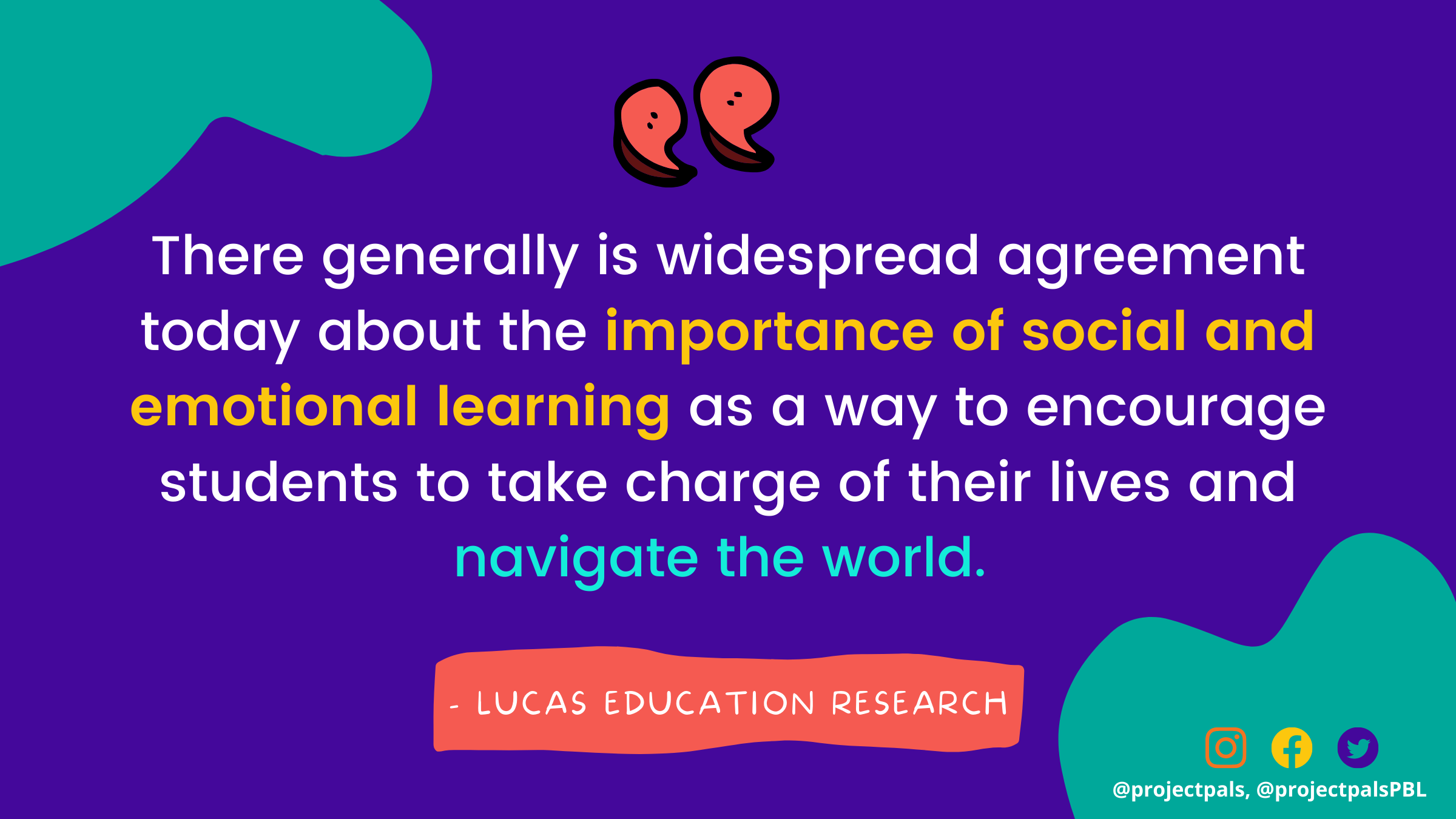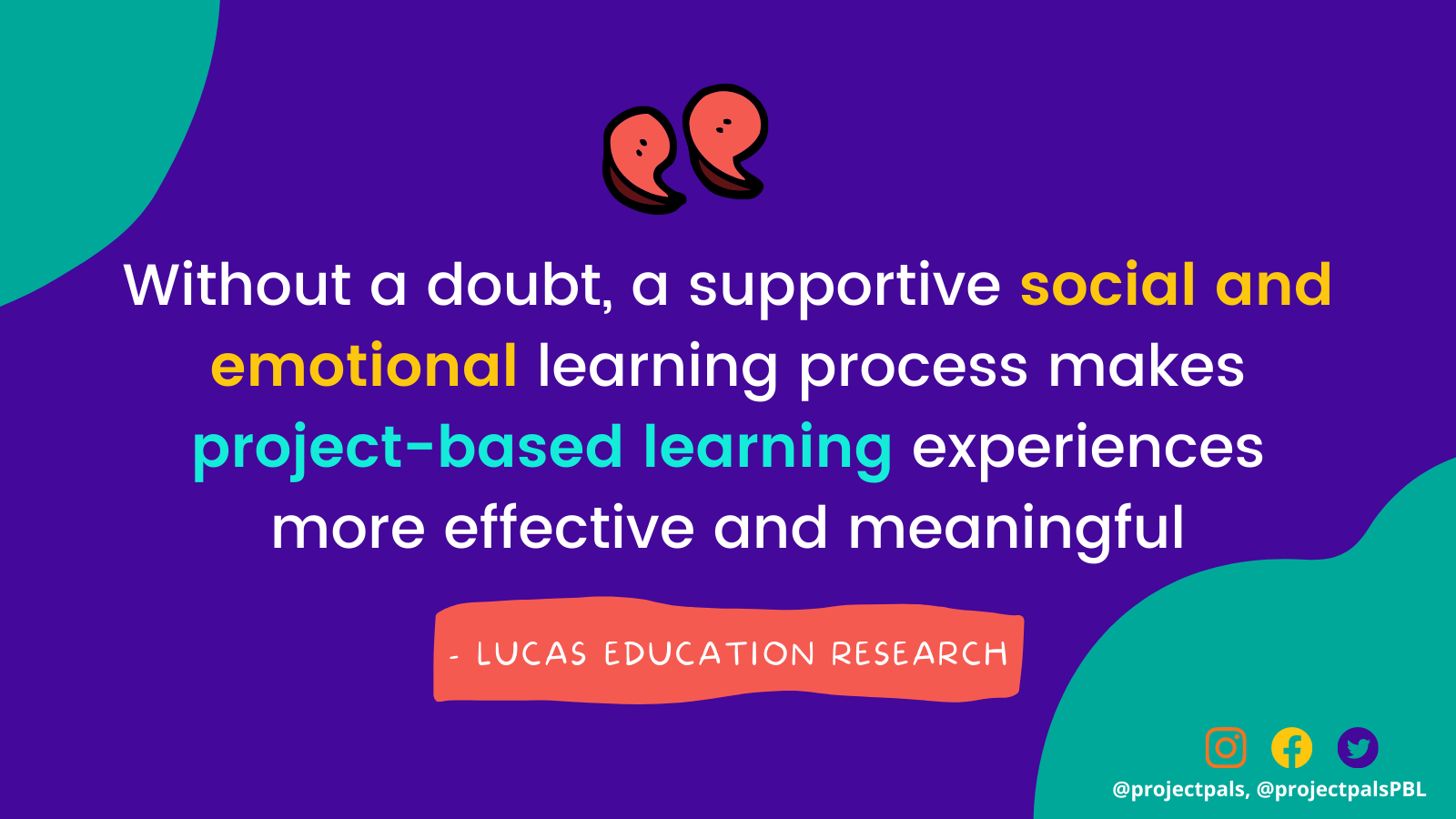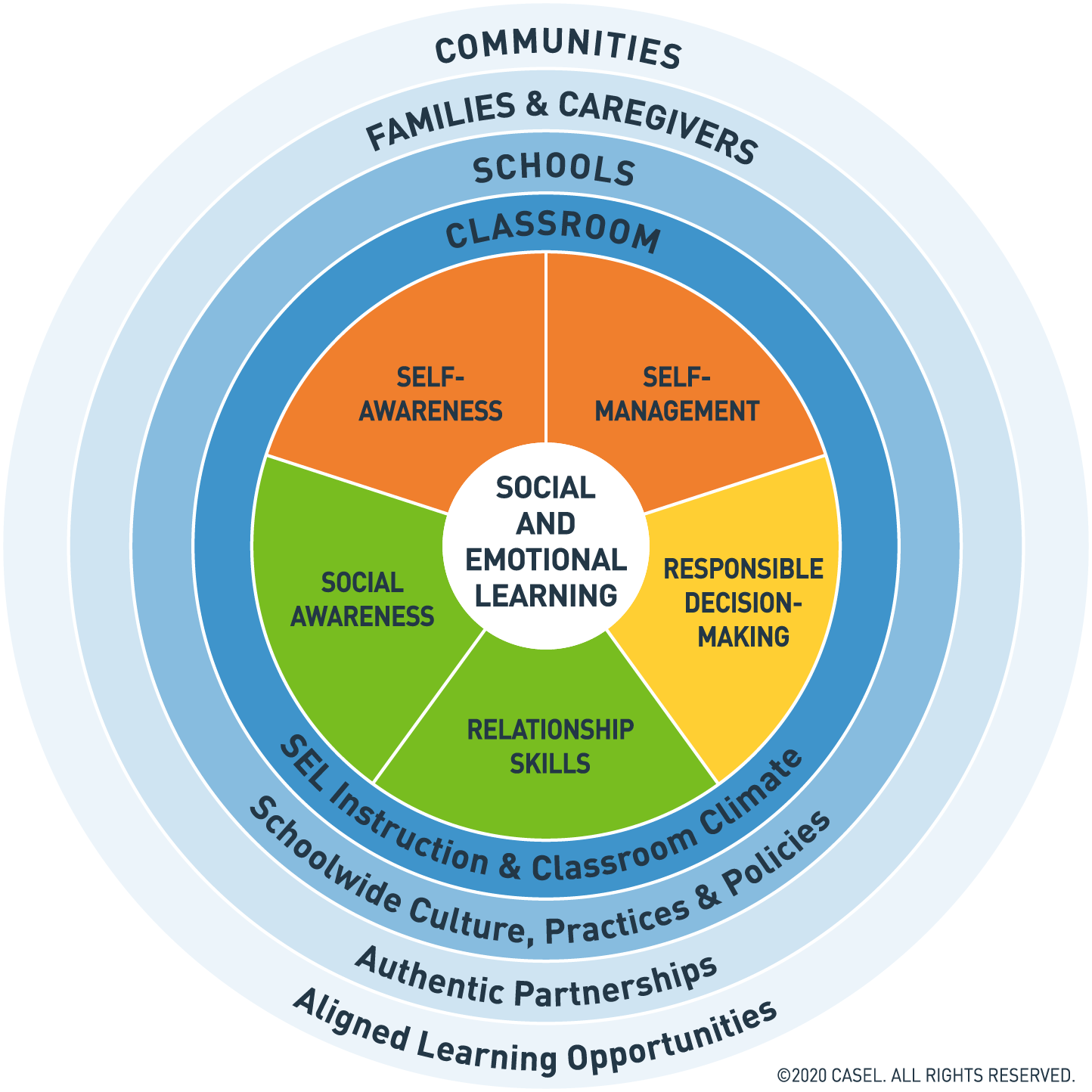There’s a reason teachers are turning their attention towards trendy, more holistic educational approaches like PBL and SEL.
The pendulum is finally swinging away from passive practices like “teaching to test” and traditional, teacher-centered instruction in favor of more active approaches to learning.
PBL and SEL offer the attractive promise of preparing students for an unpredictable future by arming them with a timeless skillset—one that emphasizes everything from creativity and collaboration to empathy and emotional intelligence.
Project-based learning offers the perfect framework for teaching essential social and emotional skills that should not be add-ons from the sidelines, but are instead “the substance of education itself.”
This article explores the link between PBL and SEL in light of a 2021 white paper by Lucas Education Research (LER) and within the context of the CASEL 5 framework.
What Is Project-Based Learning (PBL)?
Project-based learning (PBL) is an instructional methodology where students learn core content and 21st century skills by engaging with problem-based projects.
Every PBL project revolves around a central Driving Question (DQ) that aims to dissect an authentic problem that is relevant to students and the greater community. In this student-centered and inquiry-based approach, students receive ongoing feedback and complete many cycles of reflection before presenting their final product to the public.
Psst… You can read more about the basics and benefits of PBL here on our blog.
What Is Social and Emotional Learning (SEL)?
Social and emotional learning (SEL) encompasses the skills, knowledge, and attitudes necessary for children and adults to navigate emotions, develop identities, make decisions, and form healthy, lasting relationships.
These indispensable skills are sometimes called college and career readiness, 21st century competencies, or most commonly “soft skills”—but don’t let the name fool you, these intangibles are arguably the most difficult for students to master.
Some schools approach SEL with brief, explicit and isolated instruction, but in reality, SEL should be an undercurrent of your entire curriculum. “It’s vital … for all stakeholders to recognize that social and emotional development isn’t an add-on to academic experiences but is integral to those and a core part of a student’s overall education,” explains Lucas Education Research (LER), a leading nonprofit on PBL research.
SEL can be easily and seamlessly incorporated into your classroom through your culture and routines, or by modeling and taking advantage of teachable moments. This may look like morning “check-ins” with students, setting up a “Calm Down Corner” for emotional regulation, or connecting instruction with current events in the news cycle.
The Benefits of Incorporating SEL
“There generally is widespread agreement today about the importance of social and emotional learning as a way to encourage students to take charge of their lives and navigate the world,” explains LER. This is likely due to a growing body of research pointing to positive student outcomes, like improved academic achievement and reduced emotional distress.

A meta-analysis of 213 SEL programs revealed SEL “significantly improved social and emotional skills, attitudes, behavior, and academic performance that reflected an 11-percentile-point gain in achievement.” Research presents a clear case that SEL is not just essential for learning, but for student’s well-being and relationship building as well.
Soft skills are also in high demand across today’s workplaces: Creativity, persuasion, collaboration, adaptability, and emotional intelligence are just a few of the top soft skills sought out by recruiters globally per a 2020 LinkedIn survey.
How Are PBL and SEL Connected?
PBL acts as “a kind of glue between social emotional development and academic content can positively impact student growth and help young people manage emotions and forge good relationships,” explains LER.
Because PBL encourages students to engage in SEL skills like personal development, collaboration, critical-thinking, communication, and relationship building, it makes for a “natural framework” for teaching SEL.
The voice and choice afforded to students by PBL satisfies an important element of SEL as well: “By highlighting authentic connections to the world beyond the classroom, project-based learning helps students exercise agency, a core component of social and emotional development,” asserts LER.

marriage of PBL and SEL is a mutually beneficial one. Both practices build upon one another to boost learning across the board; LER concludes that “Without a doubt, a supportive social and emotional learning process makes project-based learning experiences more effective and meaningful.”
5 SEL Skills Supported by PBL
The Center for Academic, Social, and Emotional Learning (CASEL) developed a framework for SEL with five core competencies key for success in school and beyond. This skillset, known as the CASEL 5, is largely supported by PBL instruction.

1. Self-awareness
CASEL defines self-awareness as how well you are aware of your own actions, abilities, thoughts, and emotions, as exemplified by the following skills and attributes:
-
Identifying emotions
-
Accurate self-perception
-
Recognizing strengths
-
Self-confidence
-
Self-efficacy
-
Growth mindset
In PBL, students improve their self-perception and self-confidence by producing and presenting work that is meaningful and positively impacts their community. Additionally, students are able to explore their interests and play to their strengths in a low-stakes environment where failure is framed as a learning opportunity, promoting a growth mindset.
PBL also encourages metacognition, or thinking about thinking, through constant reflection and exploration of how learning occurs. Equipped with the knowledge of how they learn best, students can increase their self-efficacy when interacting with other content or interests.
2. Self-management
Self-management, sometimes called self-control or self-regulation, is the ability to take responsibility for your own behavior, emotions, and general well-being. In the CASEL framework, this includes:
-
Impulse control
-
Stress management
-
Self-discipline
-
Self-motivation
-
Goal-setting
-
Organizational skills
Because PBL projects are authentic and centered around student interests, students are likely to be more motivated and engaged than during traditional, teacher-centered instruction. Students can also circle back to their DQ to find their “why” for completing a task as a source of self-motivation.
Additionally, self-management in PBL also manifests as project management. Students identify learning goals necessary to answering their DQ and assume clearly defined roles to reach them. Each student must self-manage with the knowledge that their efforts are crucial to completing the overarching goal of the group.
3. Responsible Decision-making
Responsible decision-making entails making informed decisions that are safe, ethical, and fall within social norms. Students must also take into account the consequences of these decisions and how they may impact the well-being of themselves and others. CASEL attributes the following processes to this task:
-
Identifying problems
-
Analyzing situations
-
Solving problems
-
Evaluating
-
Reflecting
-
Ethical responsibility
Responsible decision-making is deeply embedded in a PBL curriculum. In order to identify a project’s DQ, students must identify an authentic problem within their community. To address this issue, they must analyze the situation from multiple perspectives, evaluate the effectiveness of existing solutions, and produce their own ethical and logical solution.
4. Relationship Skills
Relationship skills include the ability to create and maintain healthy relationships with diverse groups of people. Students achieve this by listening, communicating, cooperating, navigating conflict, resisting social pressures, and advocating for help when necessary. Skills and activities central to relationship skills include:
-
Communication
-
Social engagement
-
Relationship-building
-
Teamwork
PBL promotes relationship skills by challenging students to effectively communicate and collaborate within groups towards a shared goal. Students must work together as a team and navigate any interpersonal conflict in order to answer their DQ, providing the perfect structure for practicing relationship skills.
5. Social Awareness
CASEL describes social awareness as the ability to empathize with and take on the perspective of individuals from diverse cultural backgrounds, in addition to identifying social and ethical behavioral norms. Social awareness skills may manifest as:
-
Perspective-taking
-
Empathy
-
Appreciating diversity
-
Respect for others
PBL offers ample opportunities for students to take on different perspectives and explore diversity within the context of their problem. For example, in one study where PBL was applied to advanced placement (AP) instruction, students explored opposing perspectives by taking on the real-world roles behind historic Supreme Court cases. Another project created by students on the Project Pals platform explored the history and heritage behind Mexican food.
Additionally, in order to work effectively as a group, students must have a certain level of respect for one another and what they’re able to contribute to the project.
PBL and SEL: A Solution for All Students
PBL and SEL are more than just “fads” in education; they’re innovative, research-backed practices proven to help students of all abilities and backgrounds to succeed.
LER expands on the effectiveness of SEL and PBL for all students, noting:
“The evidence is clear that social and emotional learning and project-based learning can improve outcomes for underserved student populations, including students of color, English language learners, struggling readers, and low-income students.”
Now, it’s up to schools and policymakers to take action and implement these equitable instructional strategies that support the learning of all students, especially those that are often overlooked and underserved.
